Six women veterans and advocates gather around a conference table in a dingy room tucked away on the second floor of a shabby-but-historic mid-century building on the West Los Angeles campus of the U.S. Department of Veterans Affairs (VA). The women are a mix of white and black, younger and older, still-working and presumably retired. They are social workers, case managers, nonprofit representatives and outreach workers to the homeless. It’s a good thing these women aren’t there for the ambiance, since there’s precious little to be had — other than a wall clock on which someone has scrawled a cartoon face with a Sharpie.
What they are here for — at the 90-minute, once-a-month Women Veterans Collaborative — is an opportunity to do something remarkable, quite literally map out what it will take to ensure specific women veterans, and more broadly the group of women veterans in L.A. county, have access to the services they need, wherever those are located. The women veterans they discuss are known to them personally by name, and they’re talking about them as individuals — thinking about the services they need, whether childcare, or housing, or benefits, and how best to connect them to these services. The emphasis is practical and it’s personal. This group of women, most of whom are veterans, are literally taking steps to walk their sisters home.
If women veterans can seem invisible — and homeless women even more so — so too does the sometimes elusive benefit women veterans derive from sharing activities, from professional networking events to informal social events, that give them a chance to spend time with one another, and remind themselves of the good times from military service: the teamwork and the shared sense of mission.
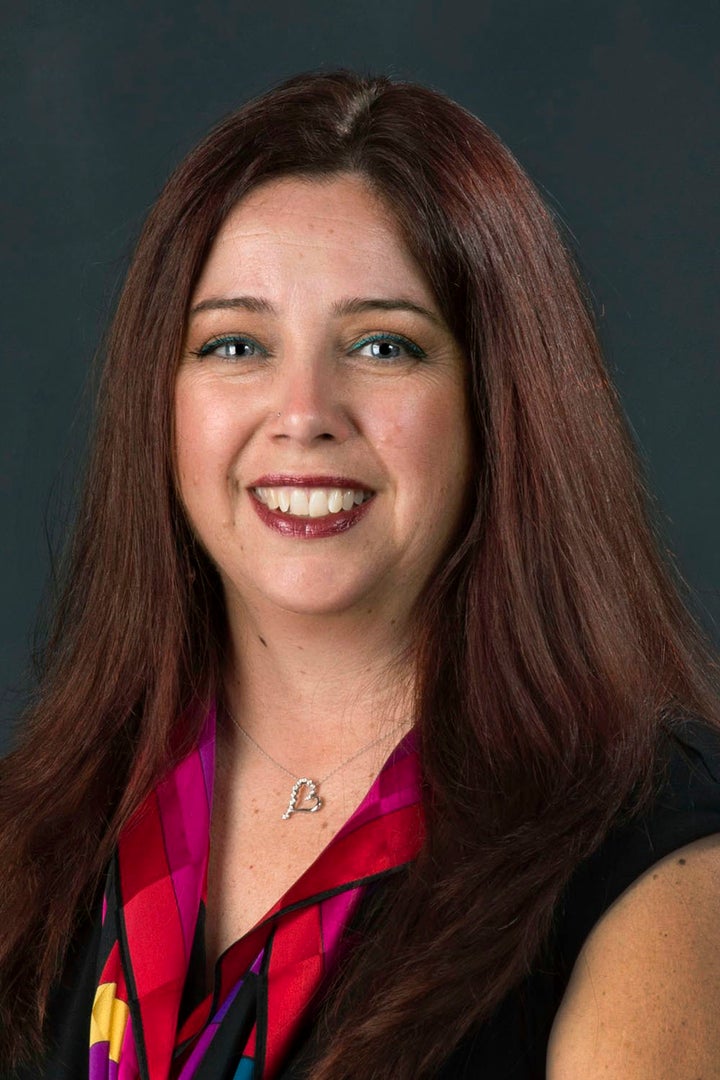
Kristine Stanley, USAF Master Sergeant (Retired), women veterans advocate, Los Angeles.
Kristine Stanley knows this from experience. Stanley, a genial force of nature, spent 24 years in the Air Force, at home and abroad, retiring as a master sergeant. A single mom with three kids, Stanley has a masters in counseling, and was a Missions Continue fellow for the National Veterans Foundation (NVF), a stint that segued into being their women veterans outreach coordinator. She also served on the board of the Foundation for Women Warriors, formerly Military Women in Need, and sometimes at night or on weekends she could be found hopping into a van to do street outreach to the homeless with the local nonprofit group, Vet Hunters.
Stanley says that during her time working for NVF, she made it her mission to show up at every even remotely veteran-related event on every calendar in LA, be it that of a government agency or a nonprofit. As a woman veteran, she sometimes felt like a “magical unicorn,” a mythical figure outside the realm of any typical veteran stereotype. And she fielded questions that many women out of uniform get, like why they’re attending a veterans event — is it to support a husband or brother or dad? “I didn’t have to tell my story in the military,” Stanley reflects, “because (in uniform) I wore my story.”
Her persistence, though, paid off. Not only did she essentially hand-build from the ground up her own network of “who does what” in veterans services in the largest county by population in the U.S., she ended up becoming a Veterans Advisory Commissioner for LA County’s Department of Military and Veterans Affairs, and now a co-chair of the California Women Veterans Leadership Council. The night before, she’d gathered a few of us for an informal bull session, serving up gourmet pizza slices and salads, inside the NVF offices. (She has since moved on to becoming a Care Coordinator for Steven A. Cohen Military Family Clinic at USC.)
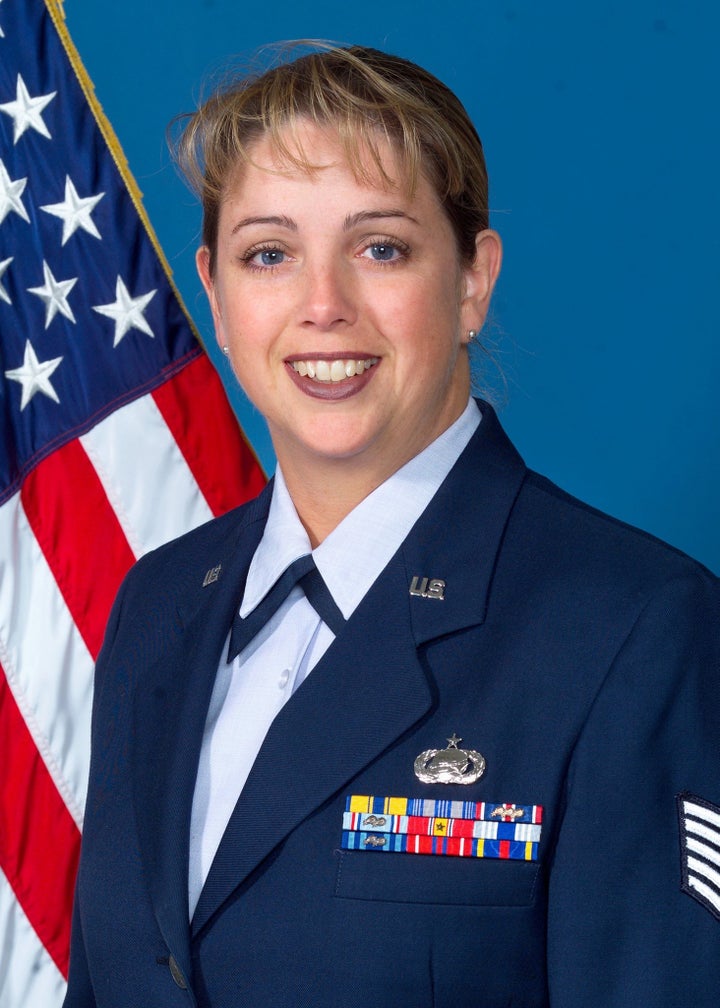
Kristine Stanley retired from the Air Force after 24 years as a Master Sergeant, and advocates for veterans full-time in Los Angeles.
The four of us were also a superficially dissimilar mix — a blonde former M.P., deep in the feels of how difficult coming back can be, a peppy black regional program manager for the American Red Cross, serving the armed forces, who’s also the wife and daughter of career military, plus Stanley and myself — but it wasn’t long before the get-together felt like a grown-up version of a girls’ sleep-over from childhood: good talks and tough talks, laughter and tears, but above all, fellowship, produced from spending time together, bonding over shared concerns.
“It’s the community that will bring us home,” Stanley says, and you can take her statement in two ways. The physical community of nonprofits, government agencies and service providers who together can provide the services that veterans need. And also the community women veterans and advocates create when they work together to support returning women veterans, who can feel isolated, almost in exile after their military service.
“I can fight for anyone else, but I can’t do it for myself (yet),” says Amber, the former M.P. who’s still reeling the evening we meet from a difficult time in a testosterone-laden unit that deployed without her to Iraq — leaving her feeling, among other things, that she missed her chance to prove that she was “as good as the guys” she’d trained with.
Her emotions, this night, are raw — the disappointment, the frustration, the anger about what amounts to tales of gender bias, sexual harassment, intimidation, and retaliation, descriptions that are sadly all too common. But through the hurt feelings and the tears, one thing is clear: The difference meeting Kristine Stanley made for her. “I just latched on to Kristine,” Amber says. “She understood who I was.”
Across the table, Lauren, the nonprofit manager, chimes in: “The hardships haven’t broken us, and they haven’t made us bitter.” “It’s about finding your tribe,” she asserts. “We just fit together,” Amber agrees. “This is the first time I can remember having real friends — you all are the first real friends I’ve ever had.”
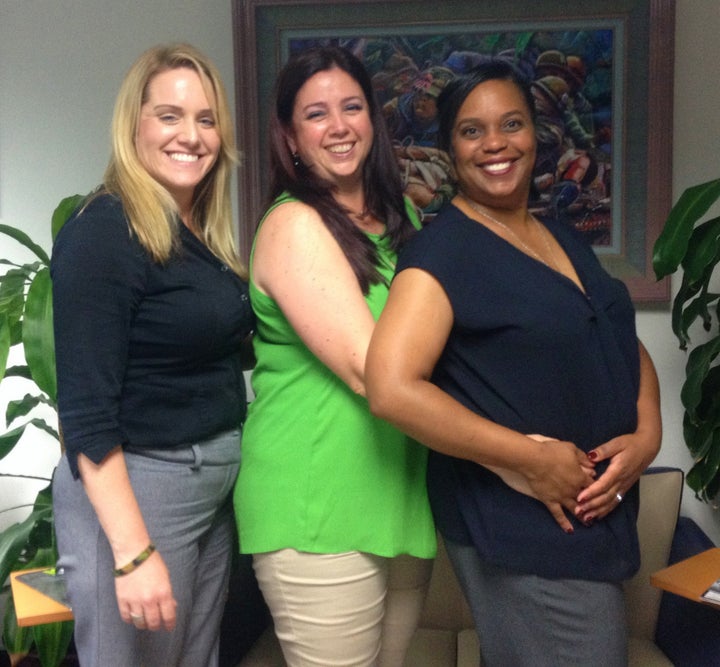
Amber, Kristine and Lauren all smile for the camera, in a good mood after an evening of socializing — and deep talks — about reintegration for women veterans.
Ah, camaraderie. It turns out to be a crucial element in the formula of what brings veterans home successfully. Sebastian Junger talks about it from an anthropological perspective in “Tribe,” but his focus is admittedly on male veterans. It seems to be no different for women, though.
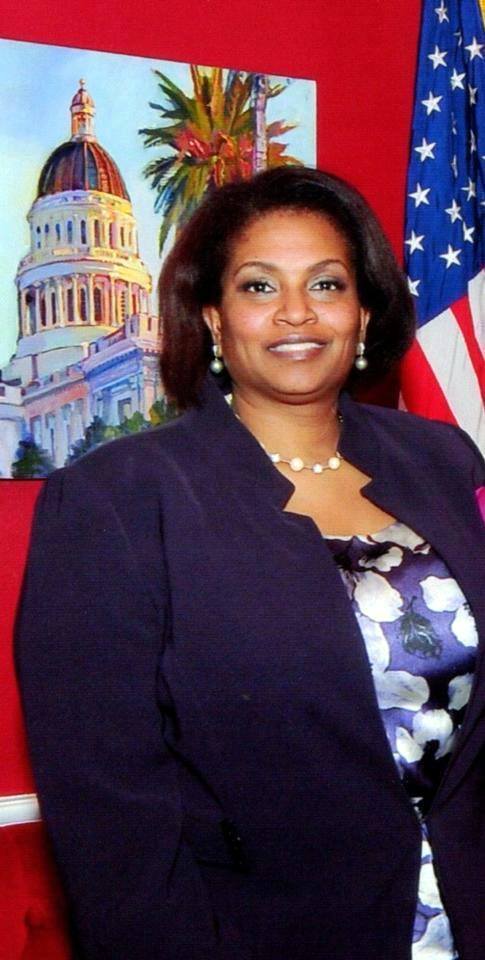
BriGette McCoy, Army veteran, MST survivor, veterans advocate, social entrepreneur, founder of Women Veteran Social Justice Network.
“Camaraderie is so important to women veterans,” says Rosie Palfy, a Marine veteran in Cleveland who spent years in a non-VA transitional housing program in Cleveland, during the years she waited for a disability compensation claim for Military Sexual Trauma (MST) to make its way through the VA system. “It reminds women veterans of the positive experiences of being in the military.” That turns out to be vital, because “when you leave the military, you don’t have the same structure” you’ve relied upon before, says Palfy.
BriGette McCoy agrees. “Civilian life is so de-centralized,” she says.
Much of McCoy’s post-service path has also been about establishing connections among former service members. An Army veteran and MST survivor who was catapulted into veteran advocacy during her participation in “Service: When Women Come Marching Home,” a documentary about female service members and the various challenges they experience on reintegration. McCoy has an enormous resume by now, replete with accolades for her work as a social entrepreneur, veterans advocate, and spokesperson for MST survivors, before Congress and in the media (CNN, the BBC and many others). Her background, though, is not dissimilar from many women who join the military: A working class background in South Central Los Angeles, and a family history of pride in military service that goes back generations.
But going into the military left McCoy with lifelong repercussions. There were “two specific sexual assaults, one major issue of sexual harassment, and some minor ones,” she recalls. Like Palfy, who survived a rape and a sexual assault during her time in the Marine Corps, McCoy’s post-service persona is not all about the pain, but about fighting back to as much normality as possible, one grueling step at a time.
“I still have to struggle with a medical condition, because of something someone did to me,” she states, matter-of-factly. But getting to this level of equanimity and poise has taken years of struggle, and some crucial therapy — as well as insight from some fellow survivors who wanted her to come to terms with their shared history.
Sadly, MST as it is known — the catch-all term the Pentagon employs to encompass a whole spectrum of sexual assault, from harassment through gang rape — is an all-too-common feature of military service. According to VA’s own statistics from 2013:
“1 in 5 women seen by VA health care respond ‘yes’ when screened for Military Sexual Trauma.”
As the authors of one research article, very familiar with the topic of MST, write:
“The challenge is that women’s traumatic experiences in the military seem to become lodged in their bodies, identities and life courses after leaving the military. As noted, several women described not becoming aware of the trauma’s impact until several years after discharge.
MST figures among homeless women veterans are disturbingly high. In one study of women veterans who were homeless and using VA services, 39.7% had experienced MST. Another study put the figure as high as 53.3%.
It seems like eons ago when McCoy reached out to longtime MST advocate Susan Avila-Smith, and wanted to talk “resources” for women veterans who were re-integrating. Avila-Smith, she recalls, kept nudging the conversation back to trauma, specifically to MST. McCoy felt perplexed — wasn’t she reaching out to talk about something else entirely? It took McCoy years, as it does many survivors, to connect the dots on how those two were related. But finally the light-bulb moment happened, and it started her down the path to healing.
Along the way, though, times were seriously tough for McCoy — and again, in that experience, she is representative of many other women veterans putting the pieces together after coming back from service. Research shows that women veterans are between two and four times as likely as their civilian counterparts to become homeless, and they are currently the fastest growing demographic of homeless veterans, including women veterans with children.
That was the case with McCoy, who was a single parent with two daughters when she exited the military, ending up in Atlanta. One of her girls had a serious health condition, and in order to survive what became a long bout with homelessness, McCoy had to — as our surveys show women veterans frequently have to — temporarily place her older daughter back with her biological father, and barter furniture(!) to keep her younger daughter in a church daycare in order to hold down a job.
Rosie Palfy — half a country away, white to McCoy’s black, with no children compared to McCoy’s single-parent status — was also struggling to hold down several part-time jobs while she waited out what turned out to be eight-and-a-half years for the VA to grant her disability claim for MST. (Technically, it’s the conditions that MST causes, such as PTSD, for which compensation is paid.)
Dutch painter Willem de Kooning once said that the “trouble with being poor is that it takes up all your time.” American sociologist Peter Rossi said something similar but from a research perspective when he talked about the accumulation of troubles experienced by the homeless. Rossi published “Down and Out in America: The Origins of Homelessness,” back in 1991, but what he wrote rings true today:
“What may be unique about (our) findings . . . are two main themes: First, the homeless are different from the domiciled extremely poor in having (a) much higher incidence of . . . problems. Second, the . . . joint impact of the disabilities produces a situation in which the overwhelming majority of the homeless have at least one disabling condition, and most have more than one.”
Military sexual trauma can cause physical and psychological injury and often both. Not a medical diagnosis in itself, MST leads to PTSD and the diagnosis becomes PTSD as caused by MST. But now the veteran has a wealth of symptoms, from the sexual assault itself, which sometimes includes a beating either before, during or after the assault, and a retinue of PTSD-related symptoms, such as difficulty sleeping, an exaggerated startle reflex and so on. MST survivors often end up filing for disability compensation, due to the series of difficulties their assaults have caused which make it hard to work, socialize, attend school or participate in a variety of other activities associated with everyday life. It’s not unusual for MST, then, to be the inciting incident that leads to the “at least one disabling condition” Rossi refers to, above.
The rape — and the command rape
It’s questionable how much the average American really understands about the prevalence of sexual assault in the military.
Survivors frequently talk, if they manage to talk at all, about two types of rape: the original rape, which can be brutal, almost a form of hazing and a quasi-tribal rejection of women in the service, and then what they colloquially call a “command rape,” where if they manage to gear up and report the assault, the unit’s commander treats them so harshly and there is such retribution from their peers that they consider the second injury, often a career-ending one, to be even worse than the first.
This is admittedly tough for civilians to wrap their brains around — first, that this even happens, and second, why it becomes seemingly even more debilitating than rape in the civilian world. (And I hesitate to even compare them, since ranking outrages isn’t quite fair.) When I met longtime MST advocate Susan Avila-Smith years ago in Seattle, she told me how very few of the thousands of survivors she’d worked with were able to hold down a job, manage responsibilities, or even sometimes leave their beds. She described the military structure, with its emphasis on being a service member’s family, as particularly difficult ground to navigate once an assault had happened, and trust had been betrayed. She described it as though it were more like incest than rape; or rape plus incest — a breaking of taboos and the ties that constructively bind. Years later, when I chanced to have a conversation with internationally known psychiatrist Frank Ochberg, M.D., he described it in very similar terms. It seems to be something that veterans who have gone through it understand, and civilians have little frame of reference for. At a certain point, it just becomes wise to accept their experience at face value and be supportive.
And military sexual trauma packs a hellacious punch. The VA’s own research shows that it leads to post-traumatic stress disorder (PTSD) at a rate even greater than combat.

The prevalence of military sexual trauma (MST) leading to post-traumatic stress disorder (PTSD), compared to PSTD from combat, in both male and female veterans.
The consequences of MST are different in male and female veterans. According to VA’s own research, MST causes male veterans to question their own sexuality, and to contemplate suicide. But women veterans who experience MST struggle with depression and social isolation.
Social isolation in women veteran MST survivors explains low attendance at survivors groups at the VA and Vet Centers, a more informal part of VA. But it also explains the high participation of women veterans online, many of whom are MST survivors. Before the advent of social media, there were message boards for MST survivors on Yahoo. Avila-Smith ran one, and McCoy got to know her — and the online community of MST survivors there. Before long, she was running message boards for survivors on her own, a process that segued into her creating Women Veteran Social Justice Network, now based in Atlanta.
Online connections provided women veteran MST survivors a sense of community that had been lacking in real life, where they were spread out across the country, continuing the tradition of being often the only female in their unit.
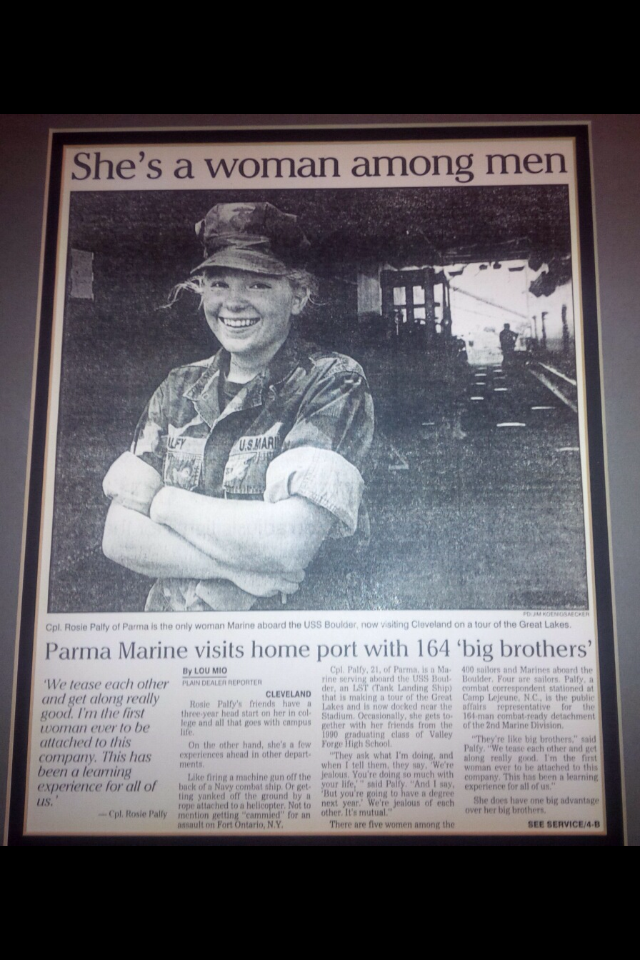
Rosie Palfy served in the Marine Corps as a combat correspondent, the “single sister in the band of brothers,” according to an article in the (Cleveland) Plain-Dealer from 1993.
Gender bias, sexual harassment, sexual assault, rape — genuinely, spend enough time around women veterans in any social setting, and it becomes hard to find a woman veteran who doesn’t have her version of what is becoming too-universal a story. From the stories women veterans tell of going to female-only veterans retreats, even if the initial focus is fly-fishing or camping or just being together, it isn’t too long before the elephant in the room, a shared experience of military sexual assault, gets brought up by one woman veteran, and then others chime in with their own stories. At a women veterans retreat held in Texas several years ago, I sat in on a session for MST survivors who, 30 and 40 years later, had yet to even breathe a word of their assaults to their closest family members, a husband or a mother — but did find they could share their stories with one another.
Susan Avila-Smith contrasts this with the ready camaraderie male veterans can experience even inside a VA healthcare setting. In a waiting room full of combat veterans wearing ball caps proclaiming their branch of service, combat era or where they served, she jokes ruefully that no woman can instantly bond with another by wearing a ball cap proclaiming instead, “raped at such-and-such a location.” She’s kidding, but darkly.
Research shows that women veterans don’t even typically self-identify as veterans, for reasons beyond the scope of this article but that generally involve feeling that the term has been co-opted by those same male veterans in the testosterone-laden VA waiting rooms. (And VA has responded, by creating women’s clinics geared toward their increasing population of female veterans, as well as installing women veterans coordinators in every VA clinic.) This feels like progress to older women veterans, who often left the military without being told they were even eligible for VA healthcare. In fact, many were told explicitly that they were not.
VA is absolutely the touchstone of anger — or satisfaction — and sometimes a disjointed blend of both — for women veterans reintegrating today. It has many disparate branches, from healthcare to compensation, home loans, insurance, even burial benefits. And as uber-networked advocate Kristine Stanley points out, all roads lead to VA, no matter how you may personally feel about that. “It’s like that uncle you have to invite to Thanksgiving dinner, even though nobody really wants him there. You have to start there, though.”
Rosie Palfy says that “a lot of times women veterans feel judged and not validated at the VA.” She herself has been happy with her healthcare at the Cleveland VA, and appreciates the series of social worker caseworkers who helped her maneuver her way through years of homelessness. “I couldn’t have navigated the system without them,” she says, appreciatively. But she also understands that because of the large, bureaucratic nature of the VA, “a bad experience with VA healthcare can turn a veteran off to what VA could offer them for housing.” “If (women) veterans have a bad experience with one side of the VA, they decide it’s all bad,” says Palfy. And Stanley agrees. “You have one shot with us,” she says, describing women veterans, before we write you off.
Now, a civilian might find this hard to appreciate, especially given the enormous nature of VA — “You give them one chance, really?!” But at a certain it makes sense to just accept women veterans at their word here.
Does such a prevalence of sexual trauma in the military cause women veterans to struggle with trust? Does the process start even earlier, when they feel they’re invisible in a unit full of men and few women? You hear that story a lot as well — so much so that I’m working on a podcast about women veterans feeling invisible when they’re homeless, but tying that back to an impression they started feeling on active duty.
Key researchers for VA who have been tracking the difficulties women veterans experience with homelessness notice the influence that gender seems to play. From a study published in 2013, several write:
“The challenge is that women’s traumatic experiences in the military seem to become lodged in their bodies, identities and life courses after leaving the military. As noted, several women described not becoming aware of the trauma’s impact until several years after discharge.”
Is the experience of trauma among women veterans the key to understanding female veteran homelessness? We know from the study published in JAMA Psychiatry in June, 2016 that MST is independently linked to homelessness, at all three time intervals the study measured (immediately, and at five and 10 years) in both men and women.
But women veterans who become homeless seem to have experienced an abnormally high level of trauma — before, during and even after military service. (They’re also more likely than male veterans who become homeless to have a high lifetime incidence of physical and sexual assault.) Homeless women veterans have experienced MST “at alarming rates,” researchers say, while on active duty or as veterans. In fact, in two years of reading and then staying current with the entire body of research literature on female veteran homelessness, the single most astonishing item was this. A study of 581 homeless women veterans drawn from 11 VA centers found that
“Virtually all homeless female veterans . . . participating in a specialized service program reported past exposure to potential trauma with . . . a median average of 31 previous potential traumas in their lives.”
When Rosie Palfy became homeless after leaving the Marine Corps, she ended up in a shelter (the VA calls theirs domiciliaries), and then spent years in a non-VA program of transitional housing, in a converted Travelodge in a gritty part of downtown Cleveland, in a program started by two nuns. The program became known as Front Steps, and a little over a year ago, Rosie Palfy was presented with what amounts to a lifetime achievement award, honoring both her exit from homelessness, and her advocacy for other homeless. Today, Palfy lives in her own home, drives a late-model car, keeps up with her gardening and her rambunctious new Boxer dog, Blue, gets her hair done and her nails done, and looks for all intents and purposes like any other suburban Gen-Xer. And unlike many MST survivors, when you meet her, she doesn’t lead with her story of the assault. In fact, it took months of knowing her before she did talk about the events leading up to her injuries.
But in addition to VA healthcare that addressed Palfy’s MST and PTSD, she was also able to benefit from her time in transitional housing, around other women, re-establishing the camaraderie that she remembered from boot camp and that formed a touchstone for her military career. “Supportive housing gives women veterans a chance to get themselves together, to process what they’ve been through,” secure in the company of other women, who at least nominally understand what they’re going through. It also gives women veterans the breathing room to move from a life of maximum structure in the service to a free-fall into basically none at all. “Getting out of the military,” says Palfy, “was more of a culture shock than going in was.”
Leaving the military, women veterans have “no preparation for what really awaits them,” states Amber, the former M.P. we met earlier on. “There’s nobody there to throw you a lifeline,” says Palfy. “The programs for us aren’t built for us,” agrees Stanley. “Having someone to help walk you through the process is invaluable,” according to Palfy, who says she found that through supportive housing and her VA caseworkers.
So coming home seems to be about camaraderie, and allowing women veterans time and space to rebuild that sense of unit cohesion and teamwork they felt as lone sisters in a much larger band of brothers. But it’s also about recognizing the deep shadow cast on safe return by the experience of significant trauma, often multiple traumas — not all of which can even be surfaced yet and expressed. In time they may be.
In the meantime, says Stanley, “You can’t force friendship. Connections can’t be formal.” The authenticity and the naturalness she projects, along with the genuine, but not fawning, concern for her sisters is real. But it’s an insight she had to first come to on her own, trekking around LA and learning who did what in which agency, offered what service to veterans. She says she was invited to an equine retreat, with yoga, for women veterans, offered at a Bed & Breakfast. The mix of activities with others, and alone time for reflection, Stanley found spoke to her soul. “All the pieces of the puzzle fit together,” she says. “I knew I was among friends. I changed, I opened up, I stopped forcing myself to hold it all together.” “I realized I needed other women veterans in my life,” she says, reflectively, “but I didn’t know that until then.”
NOTE: This article is “bonus material” attached to a three-part series, Coming Out of the Shadows: Women Veterans and Homelessness. The reporting for this series was conducted under a Howard G. Buffett inaugural grant from the International Women’s Media Foundation. The first two articles, “GI Jane Needs a Place to Sleep” and “Into the Gap: Women Veterans Describe Homelessness,” are linked here and here. The final article in the series, “The Path Home for Women Veterans” is linked here. There are also two additional stories that capture further aspects of the topic: “Homeless Women Veterans Struggle to Be Seen” and “Down for the Count: Women Veterans Likely Underestimated in Federal Homelessness Figures.” And there’s an interactive timeline of how we got to this point, a radio show/podcast including Lily Casura, BriGette McCoy and Rosie Palfy talking about female veteran homelessness, and a data visualization showing the comments of 400 women veterans describing their experiences of unstable housing after military service.
If you’re a woman veteran who served in the U.S. military but are not still on active duty, and you’d like to take a short, 5-minute, IRB-approved survey about housing issues after military service while it stays open, please use this link.
